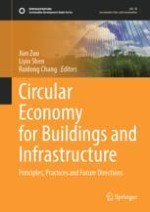2024 | OriginalPaper | Buchkapitel
12. Costs and Pricing of Green Buildings
verfasst von : Yongsheng Jiang, Dong Zhao, Zihao Xu, Yunjia Zhang, Zhongyi Men, Tao Hu
Erschienen in: Circular Economy for Buildings and Infrastructure
Aktivieren Sie unsere intelligente Suche, um passende Fachinhalte oder Patente zu finden.
Wählen Sie Textabschnitte aus um mit Künstlicher Intelligenz passenden Patente zu finden. powered by
Markieren Sie Textabschnitte, um KI-gestützt weitere passende Inhalte zu finden. powered by
